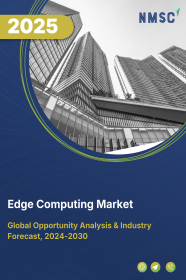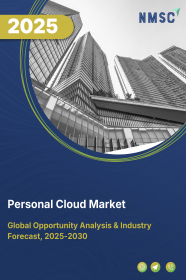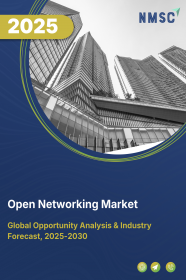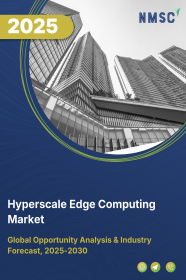
Edge Computing Market by Component (Ablation Catheters, Diagnostic Catheters, Laboratory Devices, Access Devices, Others), by Application (Atrial Fibrillation, Atrioventricular Nodal Reentry Tachycardia, Atrial Flutter, Wolff-Parkinson-White Syndrome, Other), by Organization Size (Small & Medium Enterprise and Large Enterprise), and by Industry Verticals - Global Opportunity Analysis and Industry Forecast, 2020 – 2030
Industry: ICT & Media | Publish Date: 19-Mar-2025 | No of Pages: 484 | No. of Tables: 333 | No. of Figures: 278 | Format: PDF | Report Code : IC324
US Tariff Impact on Edge Computing Market
Trump Tariffs Are Reshaping Global Business
Market Definition
The global Edge Computing Market size was valued at USD 2.49 billion in 2020 and is predicted to reach USD 68.71 billion by 2030, with a CAGR of 33.1% from 2021-2030.
Edge computing saves bandwidth and reduces latency of the network, by minimizing the distance between the client and the server. It brings proximity of the analytical resources to the end users, and simultaneously increases the scalability, reliability, speed, as well as efficiency of the system by optimizing the IoT and API technologies through a dispersed computing paradigm. Edge devices are also capable of machine learning and real-time data processing.
Market Dynamics and Trends
The global edge computing market is on a spur, owing to the increasing amalgamation of edge computing with IoT and AI technologies, the evolution of 5G technology, advancements in IT and telecommunication infrastructures, along the building load on cloud data infrastructures.
Furthermore, benefits offered by edge computing such as reduced network latency, real-time tracking & monitoring, enhanced Machine Learning & data processing, and increased efficacy, are expected to drive the growth of the global market throughout the forecast period. However, high maintenance costs, inconsistent network connectivity, and increasing penetration of local hardware in the system are the limiting factors expected to inhibit the global edge computing market growth.
Moreover, increasing adoption of edge computing specifically in the corporate sector, upsurge in government investments for digitization, the evolution of smart cities at the global level, and advancements in AI, API, automation, and robotics technologies, are anticipated to create lucrative opportunities in the global market, in coming future.
Market Segmentations and Scope of the Study
The global edge computing market report has been analyzed based on component, application, organization size, industry vertical and geography.
Based on type of component, the global market is classified into services and solutions. Based on application, the market is segmented into connected cars, critical infrastructure monitoring, environmental monitoring, smart grids, traffic management, augmented reality, assets tracking, security & surveillance, and others. Based on organization size the market is fragmented into small & medium enterprises, and large enterprises. Based on industry vertical, the market is divided into energy & utilities, government & public sector, healthcare, manufacturing, media & entertainment, transportation, retail, telecom & IT, and others. Geographic breakdown and analysis of each of the previously mentioned segments include regions comprising North America, Europe, Asia-Pacific, and RoW.
Geographical Analysis
North America is expected to dominate the global edge computing market share, accounting for the major market share throughout the forecast period. This is attributed to well established IT and cloud infrastructures, higher technological advancements, presence of developed 5G network and telecom infrastructures, as well as presence of key players and service providers in this region.
Asia Pacific is expected to demonstrate substantial growth in the global market, growing with the highest CAGR values throughout the forecast period. This is due to the development of 5G network infrastructures, evolution of smart cities, increasing investments by key players in developing countries, as well as untapped market opportunities offered by emerging economies, especially India and China.
Competitive Landscape
The edge computing industry is highly competitive and consists of various market players. Some of the major market players include Microsoft Corporation, Amazon Web Services, ClearBlade Inc, Google Inc, Dell Technologies Inc., The Hewlett Packard Enterprise Company, IBM Corporation, Cisco Systems Inc, Aarna Networks, Akamai Technologies, Inc, Avassa, American Tower Corporation, Nvidia Corporation, ADLINK Technology Inc., Fujitsu Ltd., among others. With the development and deployment of advanced product technologies, and launch of new products equipped with up-to-date features, market players are undergoing various business strategies to sustain their position in the highly competitive the global market.
For instance, in March 2020, Airtel, one of the key players in the market, announced a collaboration with Cisco, to launch India’s largest 5G-ready, 100G IP, optically integrated network, designed to enhance network accessibility, increase data storing capacity, scale network extremities, and cater the growing demand of high-speed data services throughout the country’s periphery.
In April 2020. Fujitsu Limited., one of the leading companies in the edge computing market, announced that it has received an order for the development of the supercomputer system for JAXA- the Japan Aerospace Exploration Agency. With Fujitsu’s technical expertise, JAXA aims to enhance its AI computational processing platform, expand its use in the HPC field, aggregate & analyze satellite observation data, and compute conventional numerical simulations.
In June 2020, Amazon Web Services, Inc., one of the major players in the global market and a subsidiary of the Amazon Company, announced the commercialization of its recently developed and deployed 6th generation Amazon Elastic Compute Cloud instances, ‘Amazon EC2.’ It comprises R6g instances, C6g instances, and M6g instances; that are powered by AWS-designed arm-based graviton-2 processors. The AWS instances promise to deliver 40% better price and performance over the comparable current generation.
Key Benefits
-
The edge computing market report provides a quantitative analysis of the current market and estimations through 2020-2030 that assists in identifying the prevailing market opportunities to capitalize on.
-
The study comprises a deep dive analysis of the global market including the current and future trends for depicting the prevalent investment pockets in the market.
-
The report provides detailed information related to key drivers, restraints, opportunities, and their impact on the global market.
-
The report incorporates competitive analysis of the market players along with their market share in the global market.
-
The SWOT analysis and Porters Five Forces model is elaborated in the study of the market.
-
Value chain analysis in the edge computing market study provides a clear picture of the stakeholders’ roles.
Edge Computing Market Key Segments
By Component
-
Software
-
Services
By Organization Size
-
Small & Medium Enterprises
-
Large Enterprises
By Application
-
Connected Cars
-
Smart Grids
-
Critical Infrastructure Monitoring
-
Traffic Management
-
Environmental Monitoring
-
Augmented Reality
-
Assets Tracking
-
Security & Surveillance
-
Others
By Industry Vertical
-
Energy & Utilities
-
Government & Public Sector
-
Healthcare
-
Manufacturing
-
Media & Entertainment
-
Transportation
-
Retail
-
Telecom & IT
-
Others
By Geography
-
North America
-
The U.S
-
Canada
-
Mexico
-
-
Europe
-
UK
-
Germany
-
France
-
Italy
-
Spain
-
Denmark
-
Netherlands
-
Finland
-
Sweden
-
Norway
-
Russia
-
Rest of Europe
-
-
Asia-Pacific
-
China
-
Japan
-
India
-
South Korea
-
Australia
-
Indonesia
-
Singapore
-
Taiwan
-
Thailand
-
Rest of Asia-Pacific
-
-
RoW
-
Latin America
-
Middle East
-
Africa
-
Key Players
-
Microsoft Corporation
-
Amazon Web Services
-
ClearBlade Inc
-
Google Inc
-
Dell Technologies Inc.
-
The Hewlett Packard Enterprise Company
-
IBM Corporation
-
Cisco Systems Inc
-
Aarna Networks
-
Akamai Technologies, Inc
-
Avassa
-
American Tower Corporation
-
Nvidia Corporation
-
ADLINK Technology Inc.
-
Fujitsu Ltd.
REPORT SCOPE AND SEGMENTATIONS:
|
Parameters |
Details |
|
Analysis Period |
2020–2030 |
|
Base Year Considered |
2020 |
|
Forecast Period |
2021–2030 |
|
Market Size Estimation |
Billion (USD) |
|
Market Segmentation |
By Component (Ablation Catheters, Diagnostic Catheters, Laboratory Devices, Access Devices, Others), by Application (Atrial Fibrillation, Atrioventricular Nodal Reentry Tachycardia, Atrial Flutter, Wolff-Parkinson-White Syndrome, Other), by Organization Size (Small & Medium Enterprise and Large Enterprise), by Industry Vertical (Energy & Utilities, Government & Public Sector, Healthcare, Manufacturing, Media & Entertainment, Transportation, Retail, Telecom & IT, and Others) |
|
Geographical Segmentation |
North America (U.S., Canada, Mexico), Europe (UK, Germany, France, Italy, Spain, Denmark, Netherlands, Finland, Sweden, Norway, Russia, Rest of Europe), Asia-Pacific (China, Japan, India, South Korea, Australia, Indonesia, Singapore, Taiwan, Thailand, Rest of Asia-Pacific), , Rest of the World (Latin America, Middle East, Africa) |
|
Companies Profiled |
Microsoft Corporation, Amazon Web Services, ClearBlade Inc, Google Inc, Dell Technologies Inc., The Hewlett Packard Enterprise Company, IBM Corporation, Cisco Systems Inc, Aarna Networks, Akamai Technologies, Inc, Avassa, American Tower Corporation, Nvidia Corporation, ADLINK Technology Inc., Fujitsu Ltd. |

















 Speak to Our Analyst
Speak to Our Analyst




















